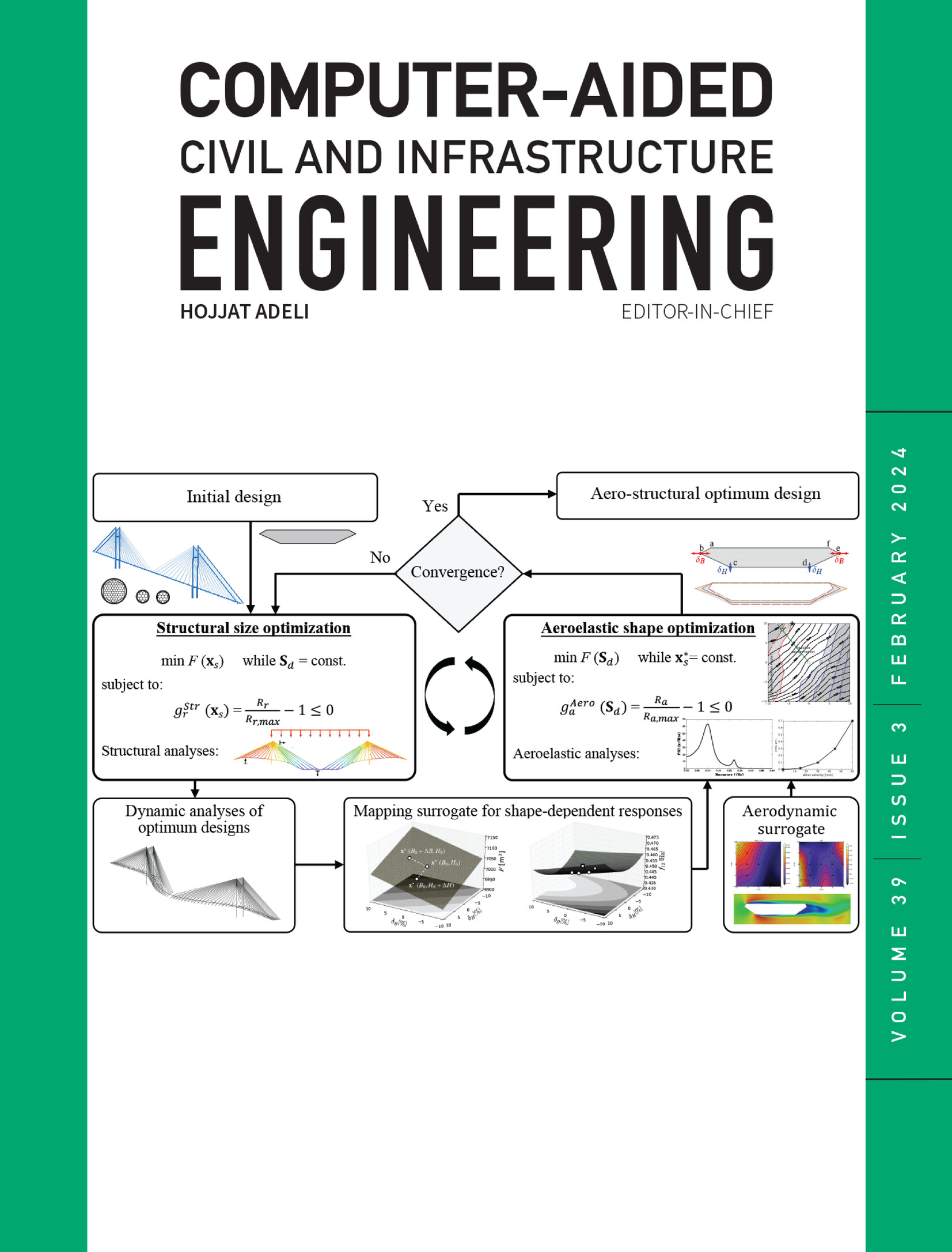Optimizing green splits in high‐dimensional traffic signal control with trust region Bayesian optimization
IF 8.5
1区 工程技术
Q1 COMPUTER SCIENCE, INTERDISCIPLINARY APPLICATIONS
引用次数: 0
Abstract
Centralized traffic signal control has long been a challenging, high‐dimensional optimization problem. This study establishes a simulation‐based optimization framework and develops a novel optimization algorithm based on trust region Bayesian optimization (TuRBO), which can efficiently obtain an approximate optimal solution to the high‐dimensional traffic signal control problem. Local Gaussian process (GP), trust region, and Thompson sampling are employed in the TuRBO and contribute considerably to performance in terms of computational speed, solution quality, and scalability. Empirical studies are carried out using data from Mudanjiang and Chengdu, China. The performance of TuRBO is compared with that of Bayesian optimization (BO), genetic algorithm and random sampling. The results show that TuRBO converges the fastest because of its ability to balance exploration and exploitation through the trust region and Thompson sampling. Meanwhile, because TuRBO enables more efficient exploitation through the local GP, the solution quality of TuRBO outperforms others significantly. The average waiting time achieved by TuRBO was 2.84% lower than that achieved by BO. Finally, the method has been successfully extended to a large network with 233‐dimensional spaces and 122 signalized intersections, demonstrating that the developed methodology can deal with high‐dimensional traffic signal control effectively for real case applications.用信任区域贝叶斯优化法优化高维交通信号控制中的绿化分割
长期以来,集中式交通信号控制一直是一个具有挑战性的高维优化问题。本研究建立了一个基于仿真的优化框架,并开发了一种基于信任区域贝叶斯优化(TuRBO)的新型优化算法,该算法可以高效地获得高维交通信号控制问题的近似最优解。TuRBO 采用了局部高斯过程 (GP)、信任区域和汤普森采样,在计算速度、解的质量和可扩展性等方面都有显著提高。利用中国牡丹江和成都的数据进行了实证研究。将 TuRBO 的性能与贝叶斯优化(BO)、遗传算法和随机抽样进行了比较。结果表明,TuRBO 的收敛速度最快,因为它能够通过信任区域和汤普森采样平衡探索和开发。同时,由于 TuRBO 通过局部 GP 实现了更有效的开发,因此其解决方案的质量明显优于其他方案。TuRBO 所实现的平均等待时间比 BO 低 2.84%。最后,该方法还成功地扩展到了一个拥有 233 维空间和 122 个信号交叉口的大型网络中,证明了所开发的方法可以有效地处理高维交通信号控制的实际应用。
本文章由计算机程序翻译,如有差异,请以英文原文为准。
求助全文
约1分钟内获得全文
求助全文
来源期刊
CiteScore
17.60
自引率
19.80%
发文量
146
审稿时长
1 months
期刊介绍:
Computer-Aided Civil and Infrastructure Engineering stands as a scholarly, peer-reviewed archival journal, serving as a vital link between advancements in computer technology and civil and infrastructure engineering. The journal serves as a distinctive platform for the publication of original articles, spotlighting novel computational techniques and inventive applications of computers. Specifically, it concentrates on recent progress in computer and information technologies, fostering the development and application of emerging computing paradigms.
Encompassing a broad scope, the journal addresses bridge, construction, environmental, highway, geotechnical, structural, transportation, and water resources engineering. It extends its reach to the management of infrastructure systems, covering domains such as highways, bridges, pavements, airports, and utilities. The journal delves into areas like artificial intelligence, cognitive modeling, concurrent engineering, database management, distributed computing, evolutionary computing, fuzzy logic, genetic algorithms, geometric modeling, internet-based technologies, knowledge discovery and engineering, machine learning, mobile computing, multimedia technologies, networking, neural network computing, optimization and search, parallel processing, robotics, smart structures, software engineering, virtual reality, and visualization techniques.

 求助内容:
求助内容: 应助结果提醒方式:
应助结果提醒方式:


